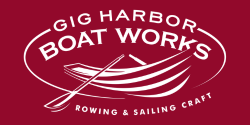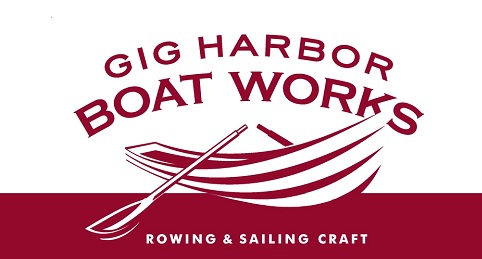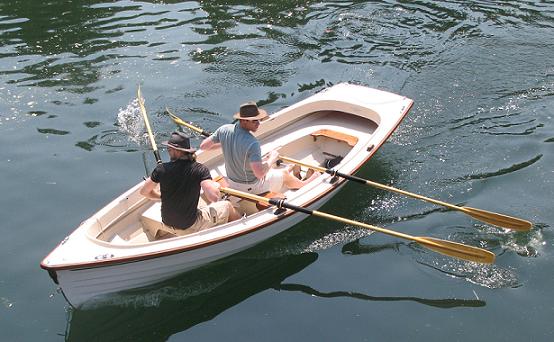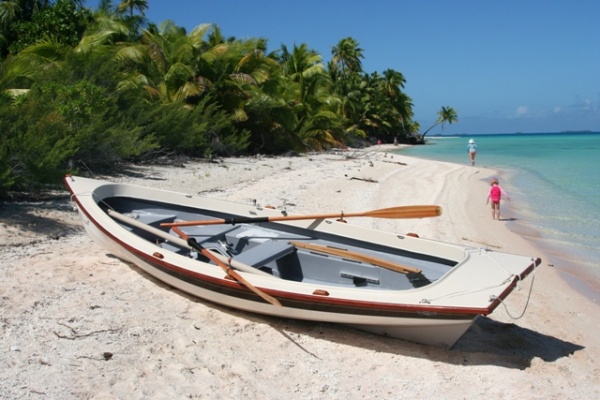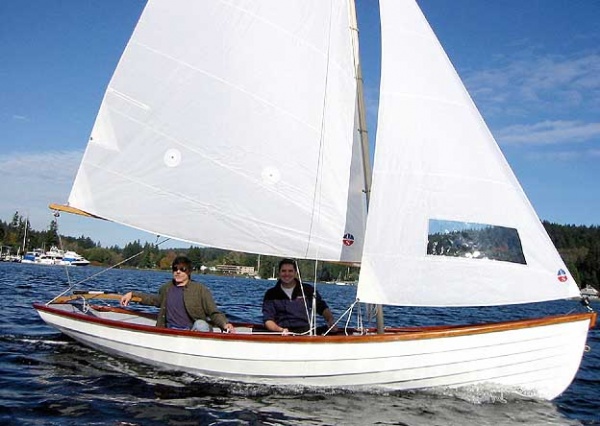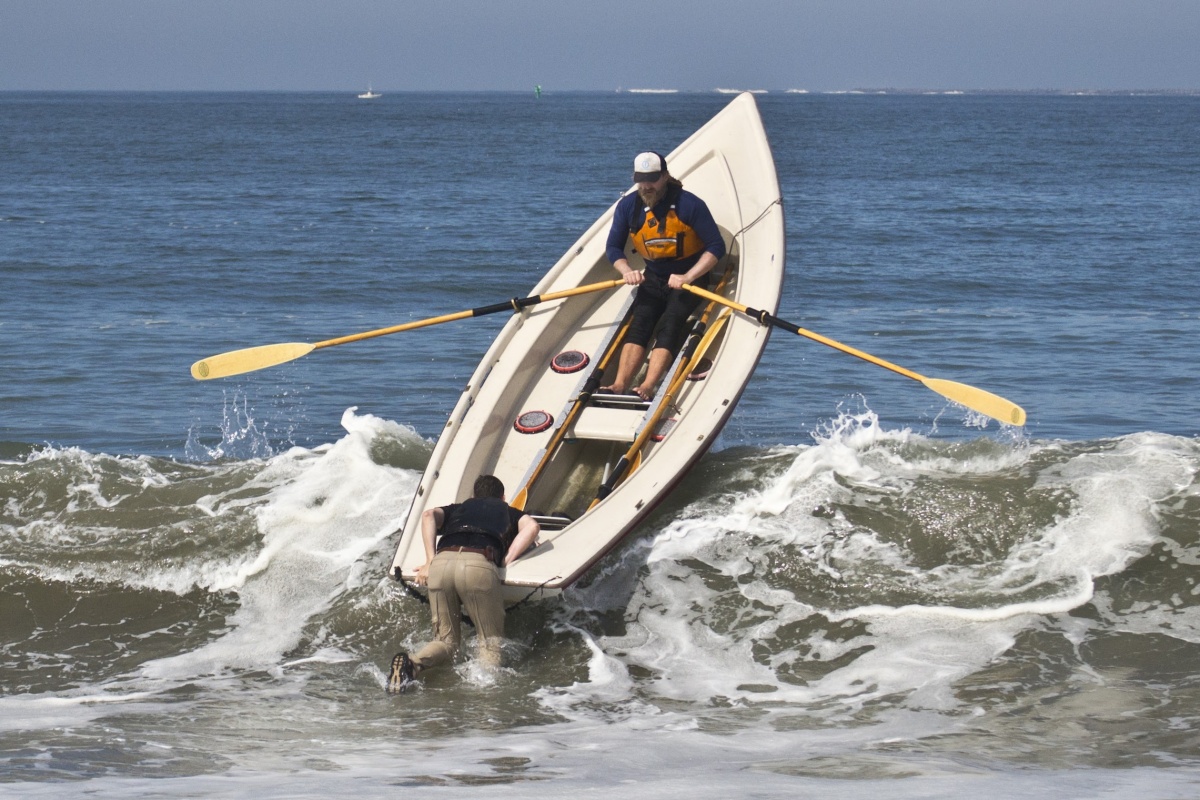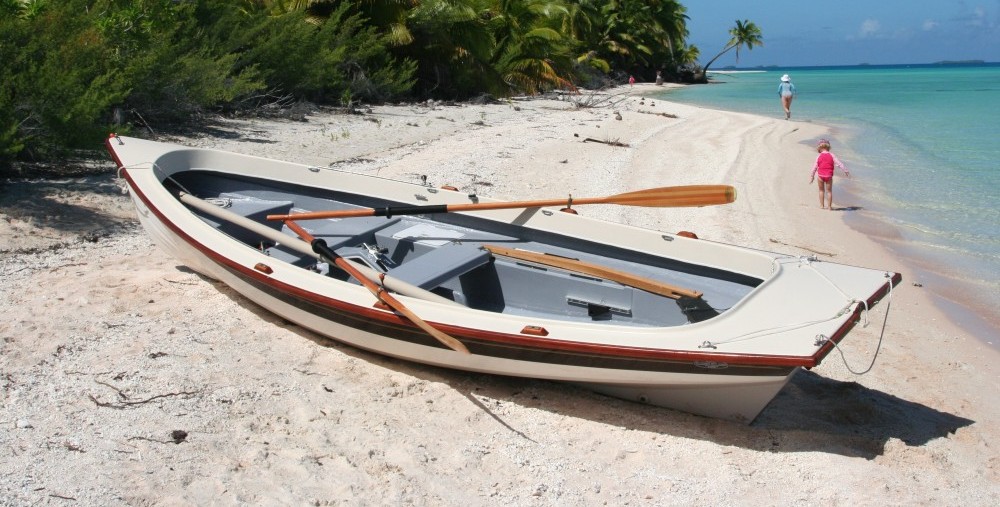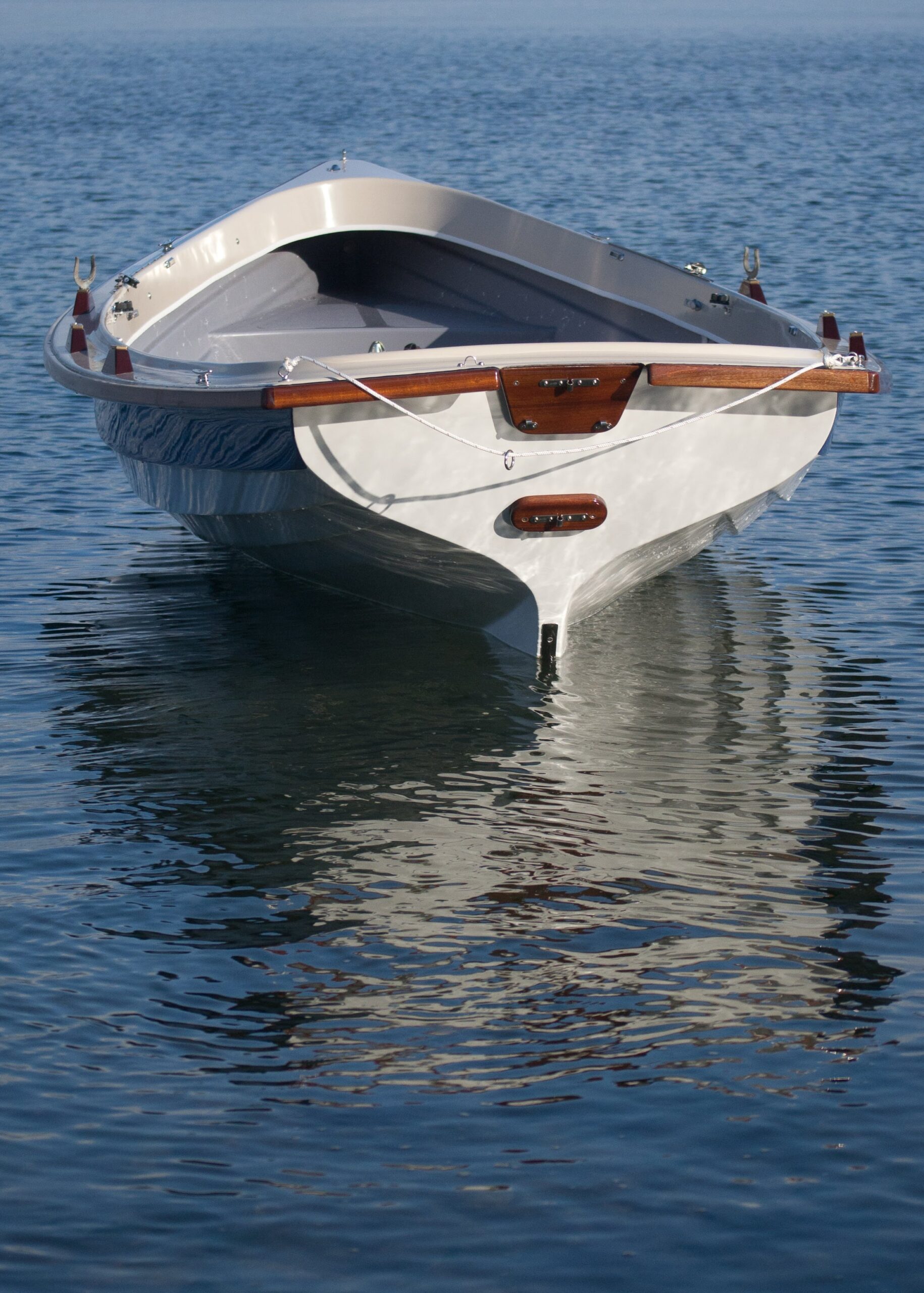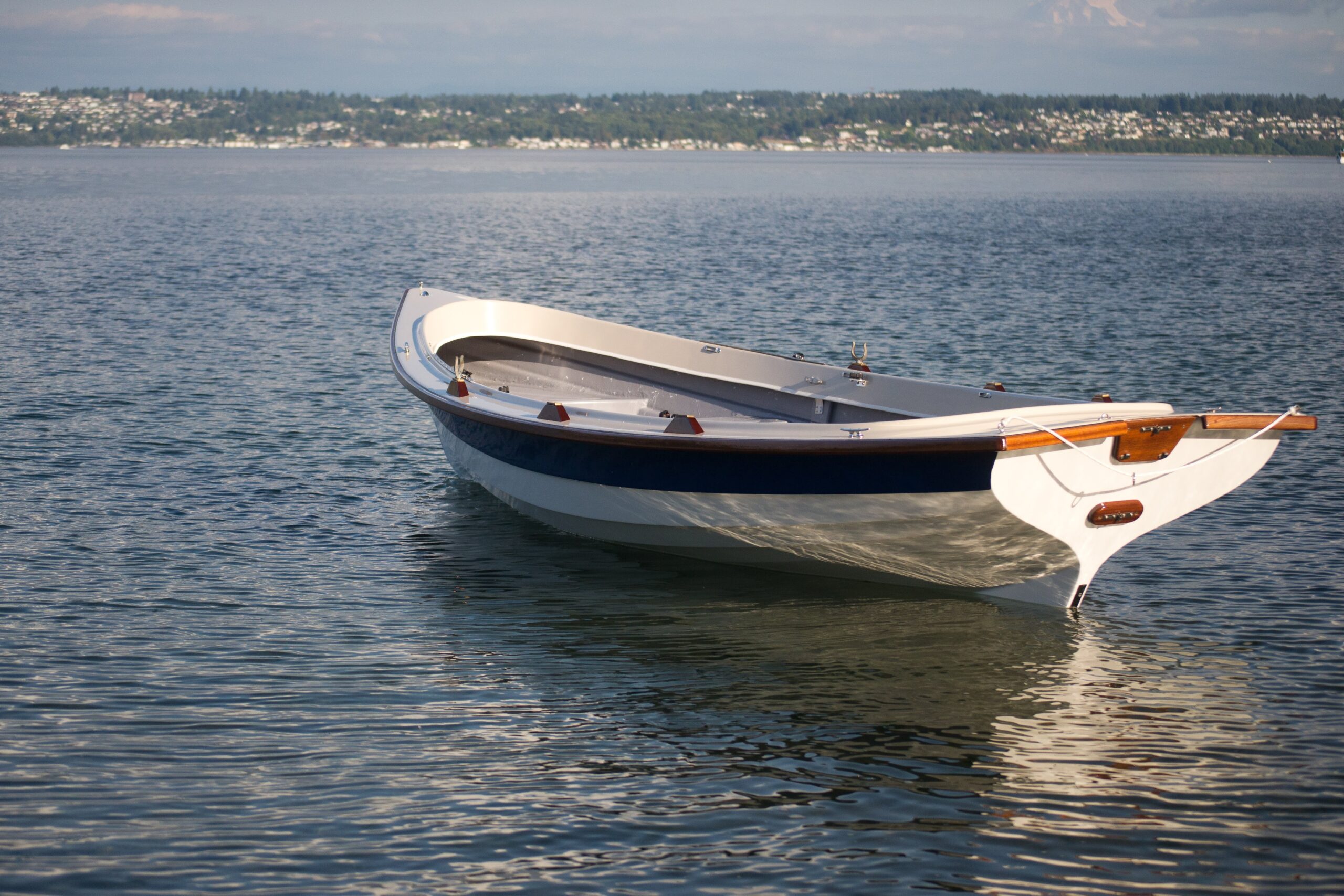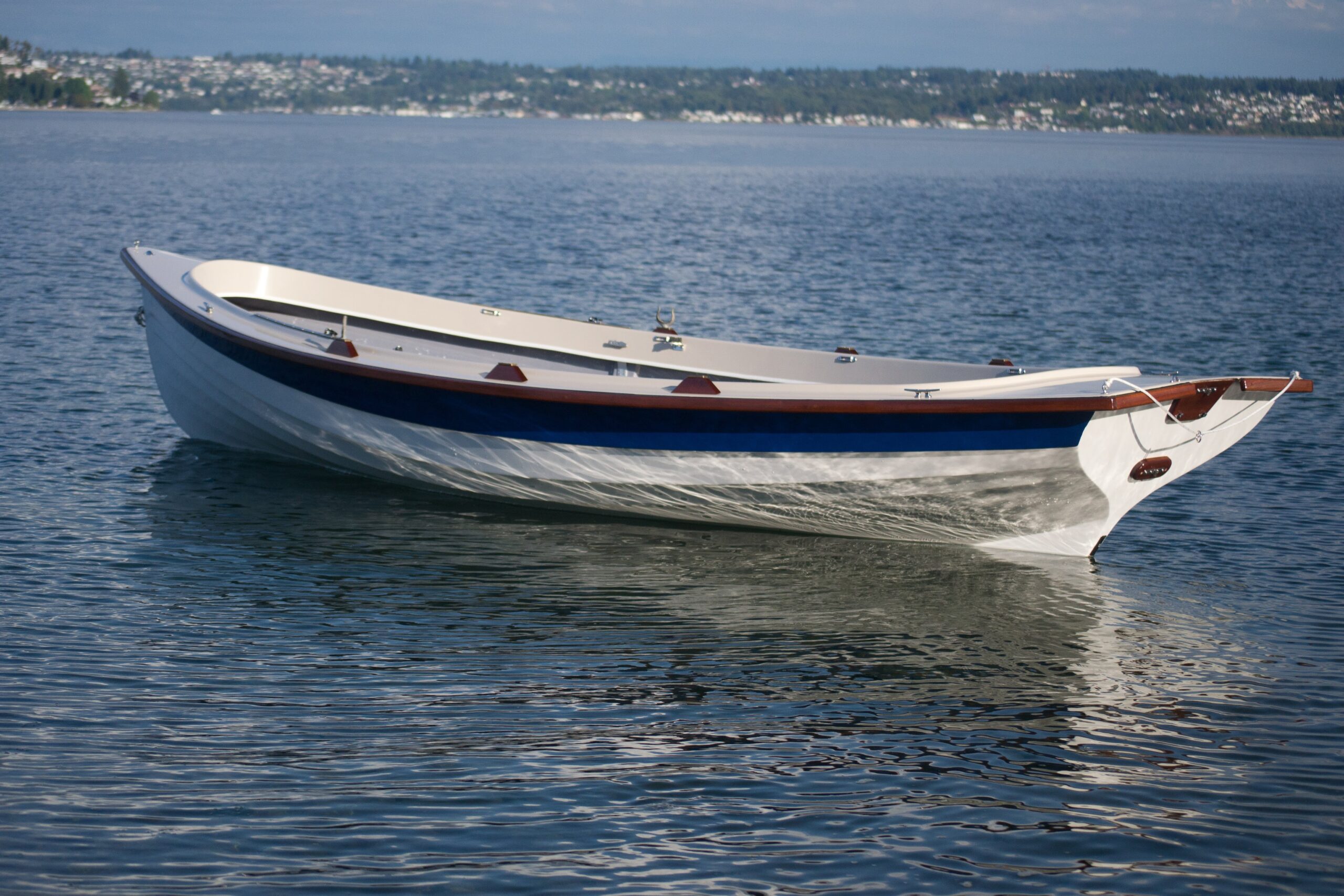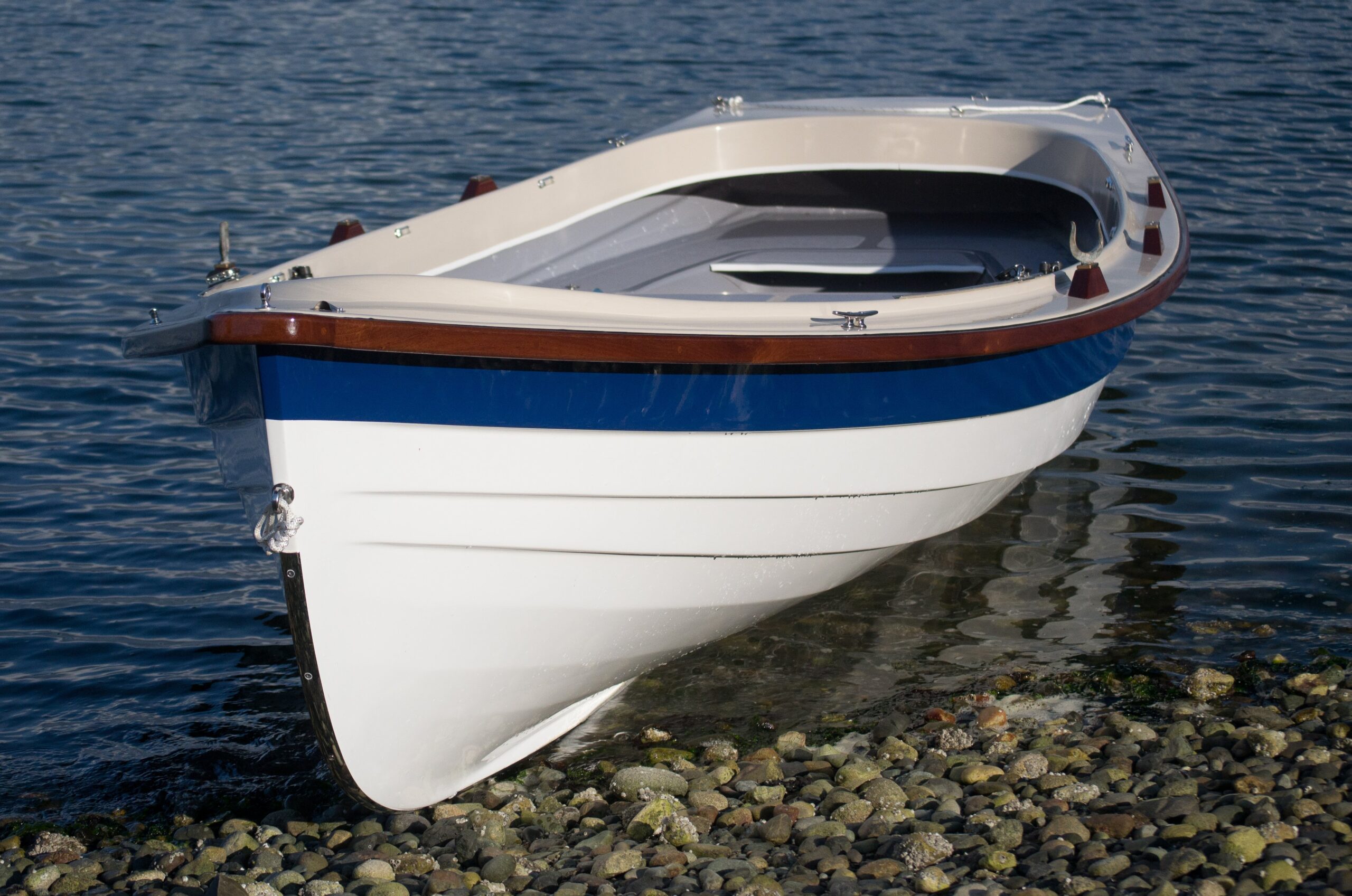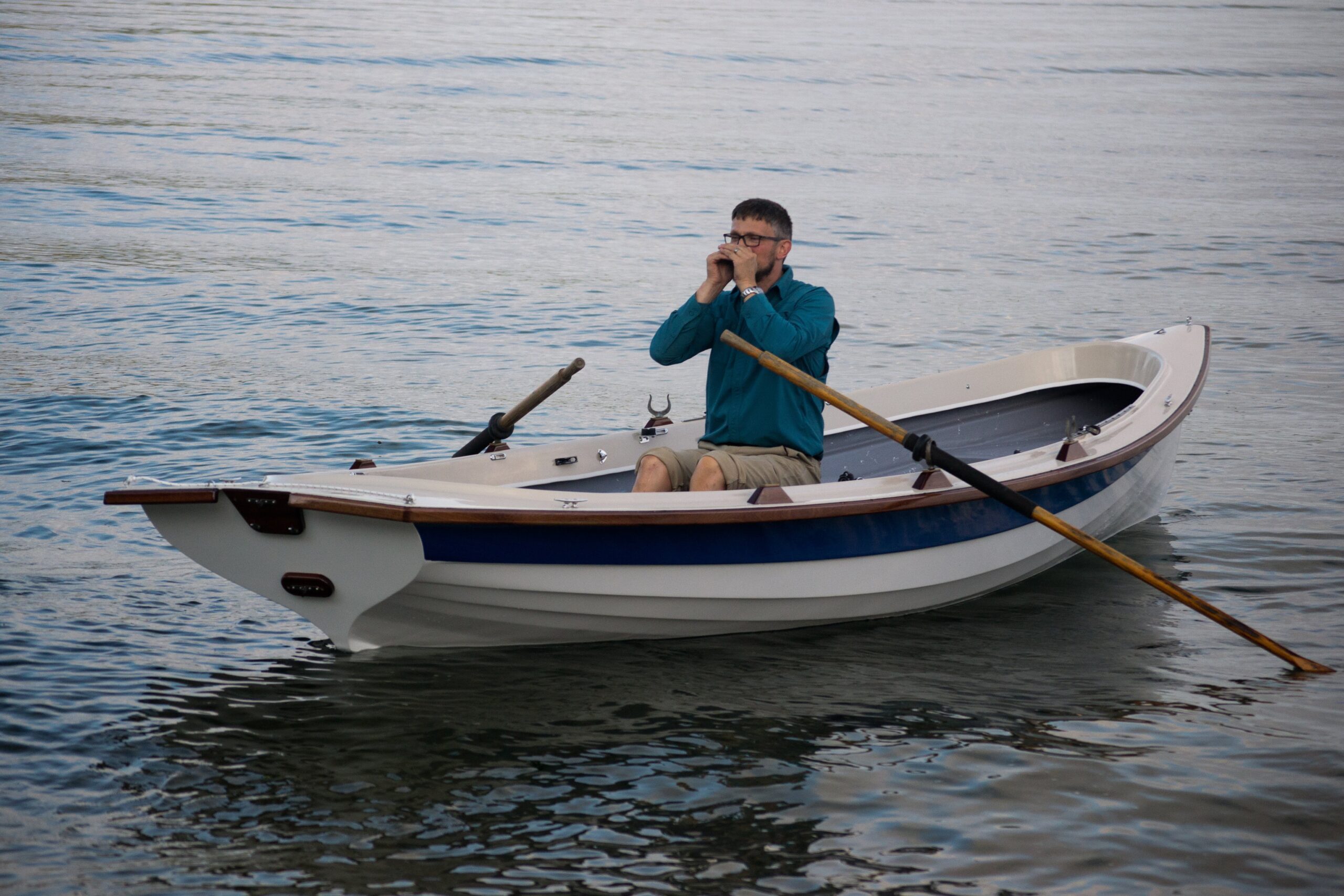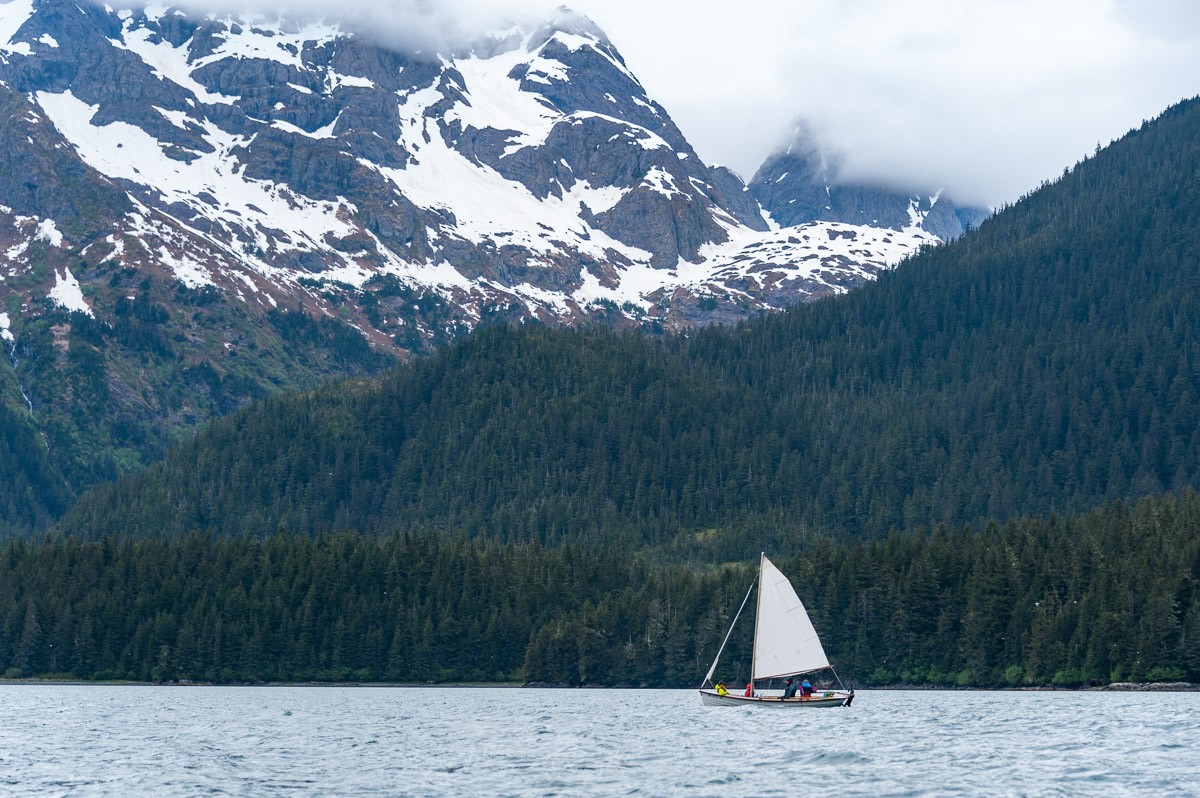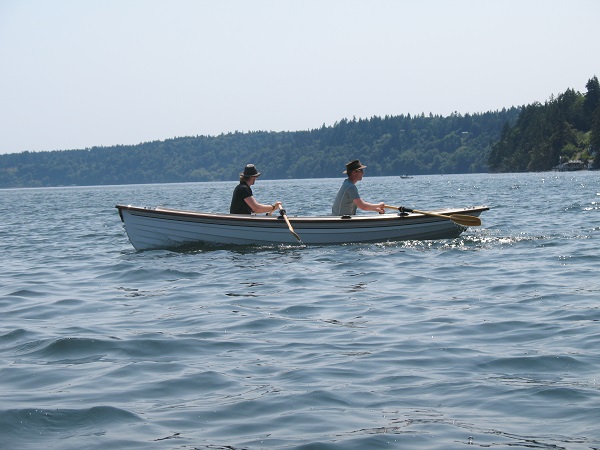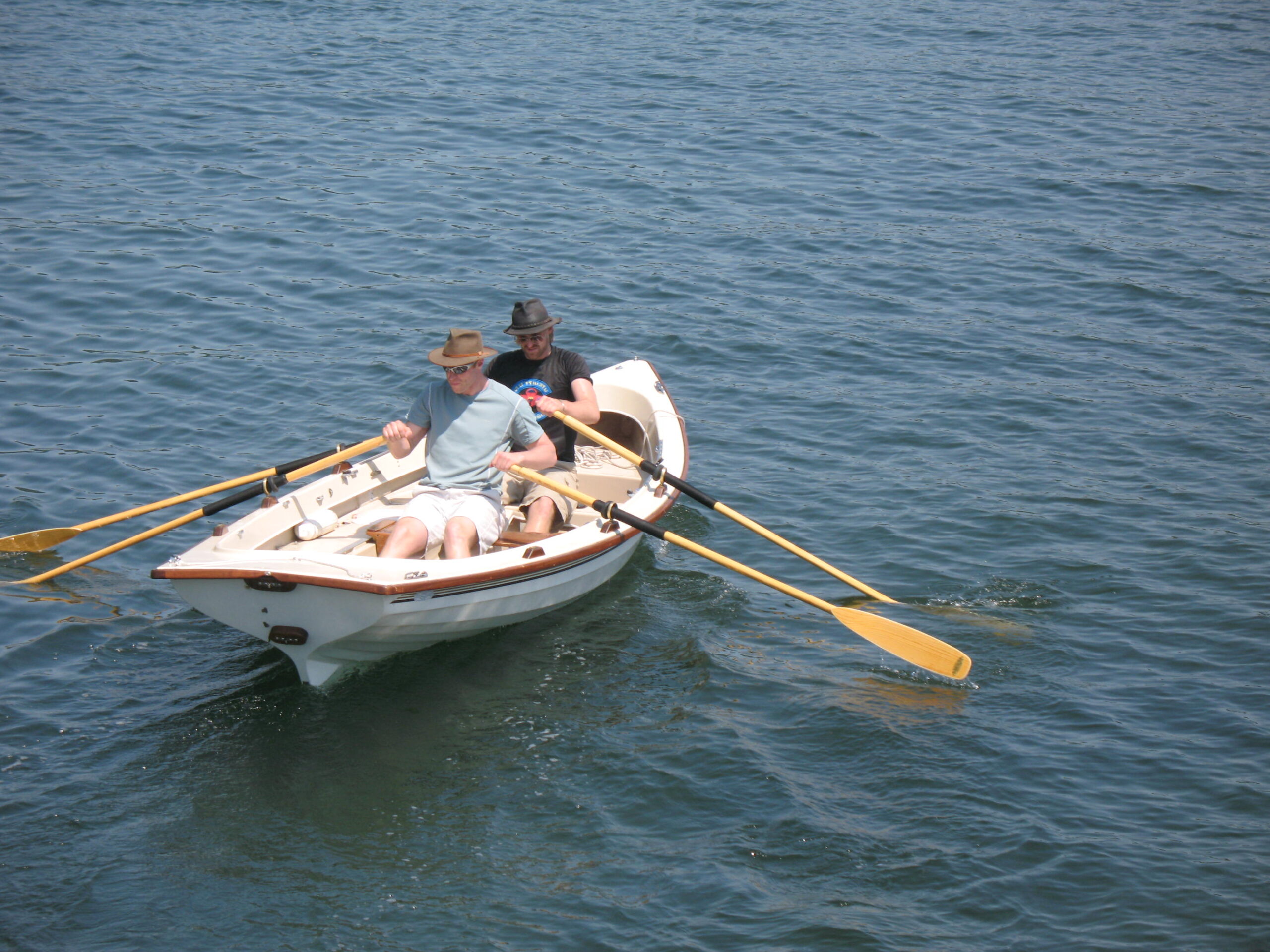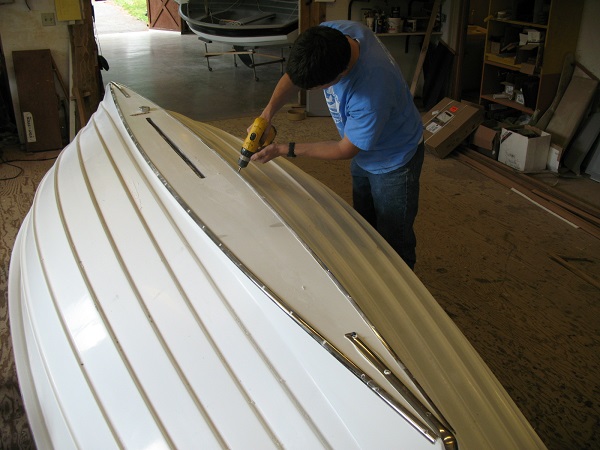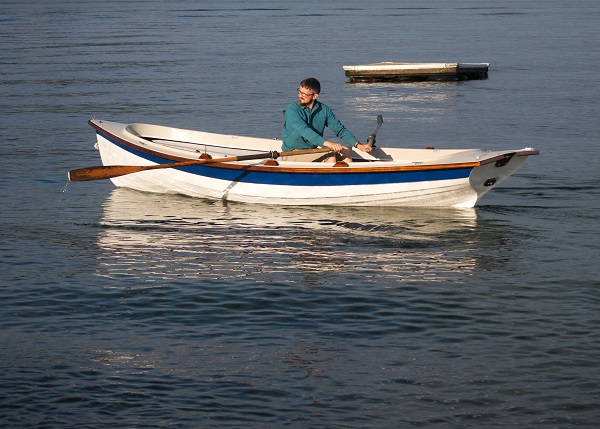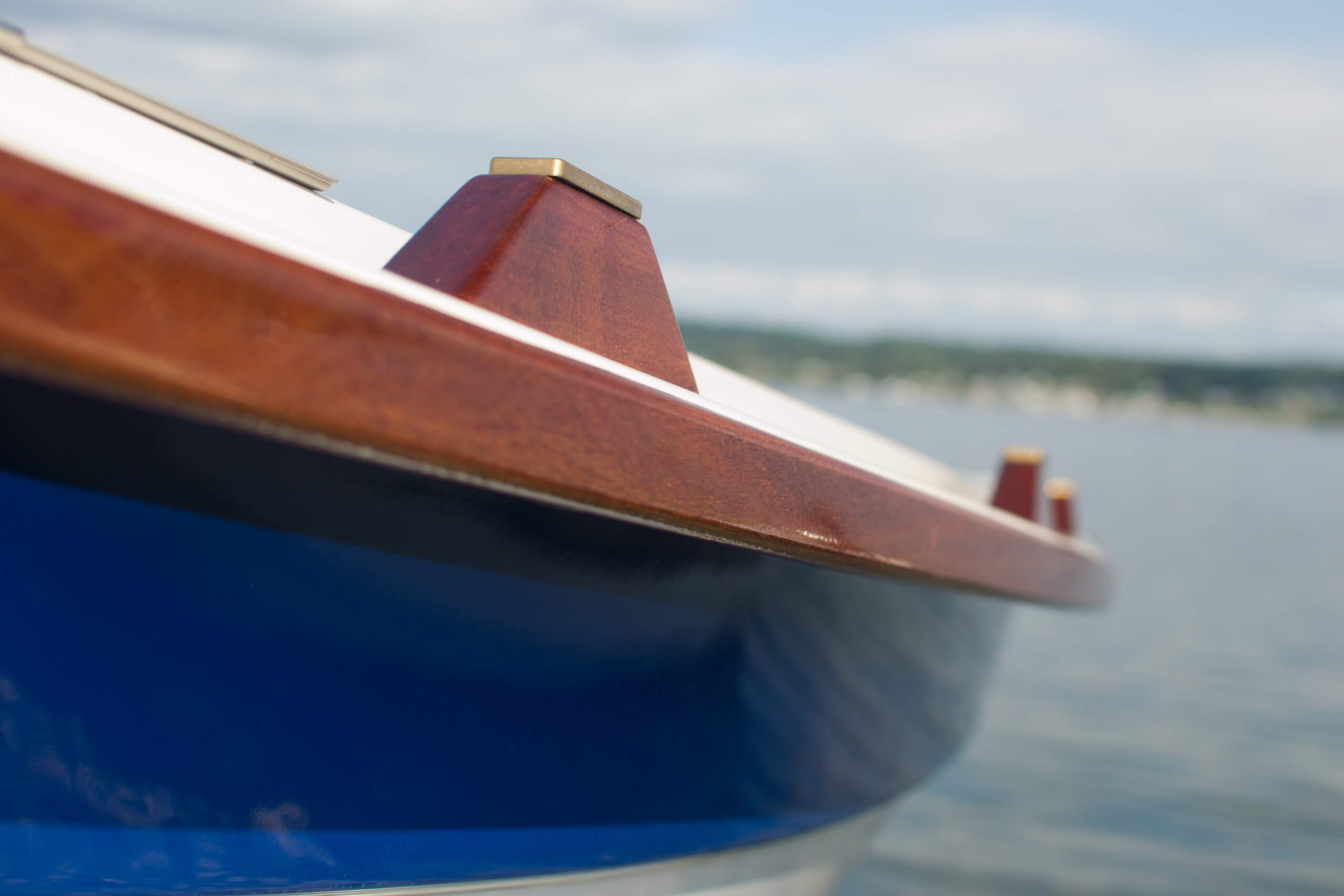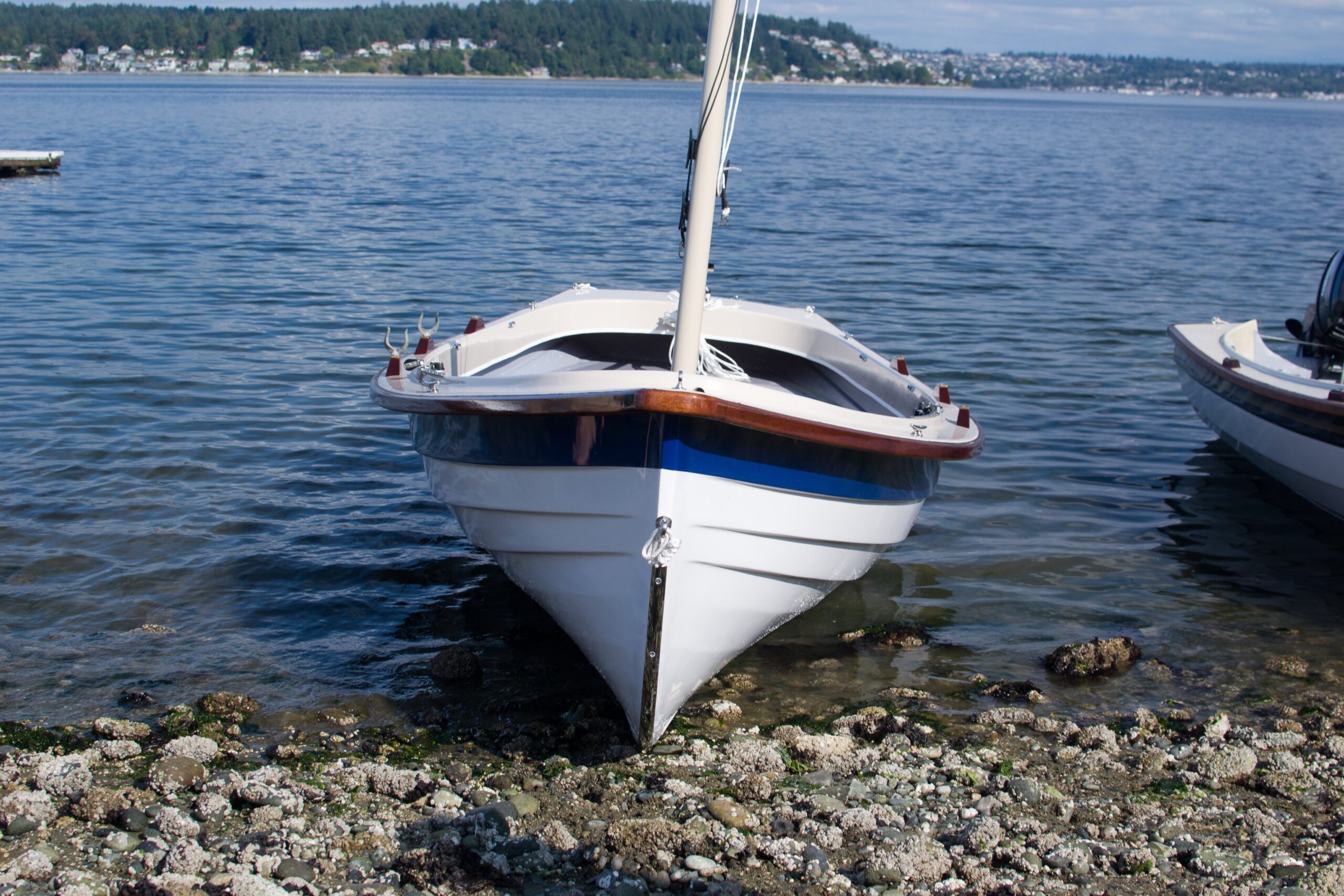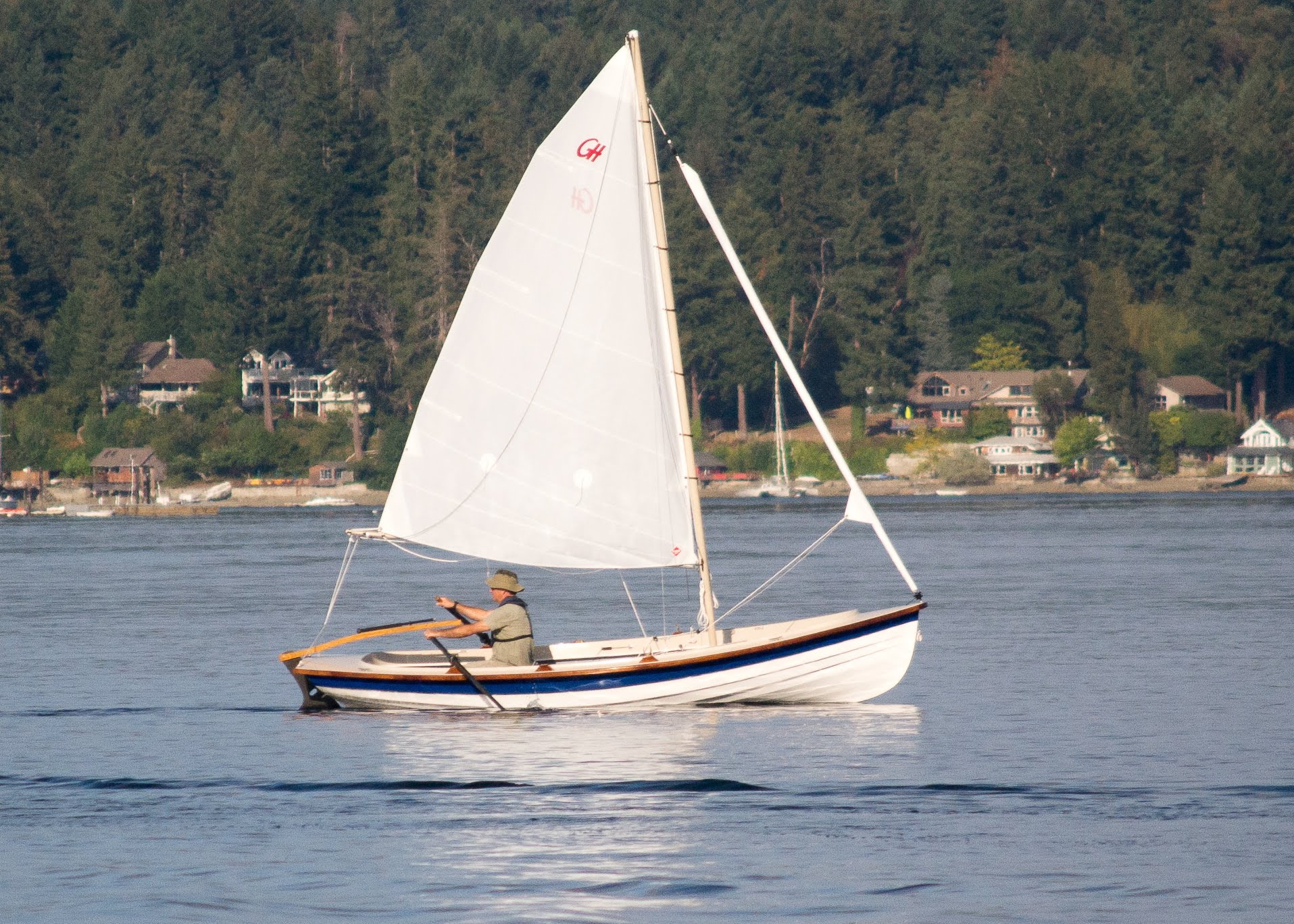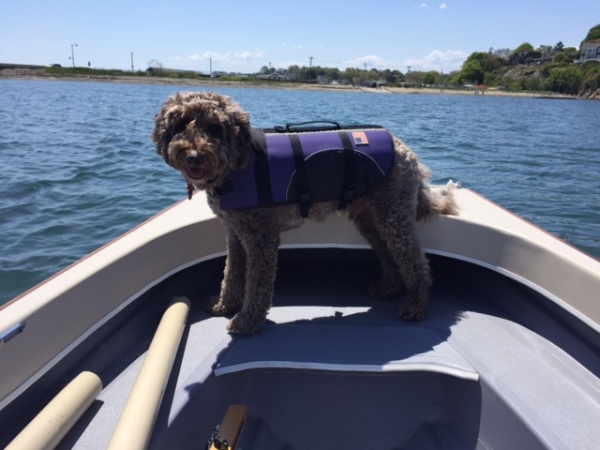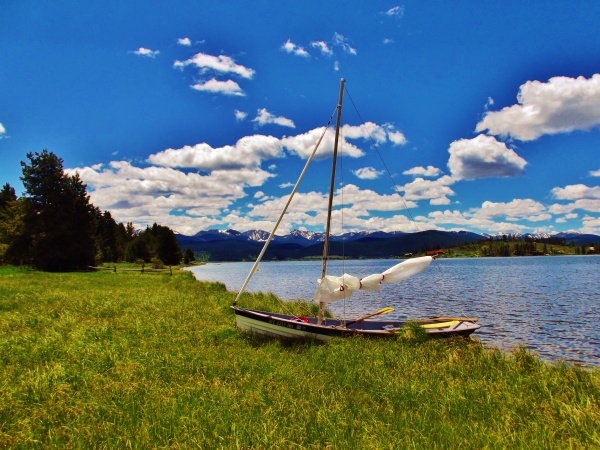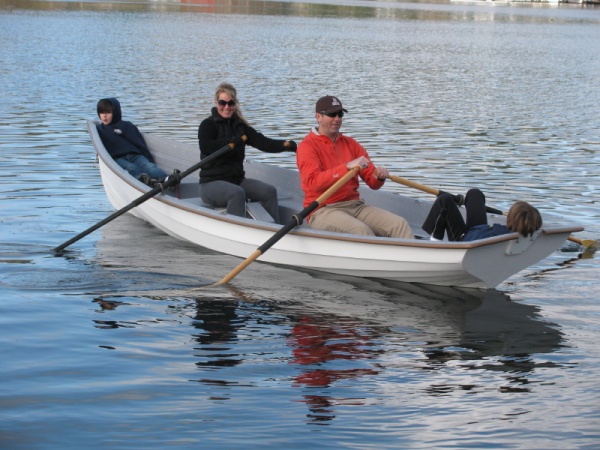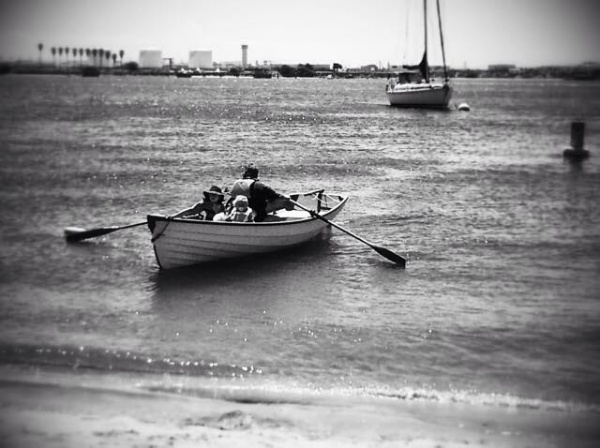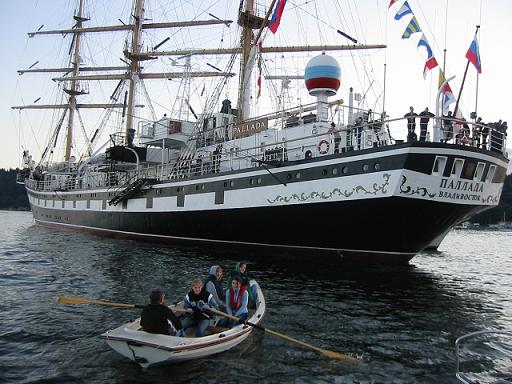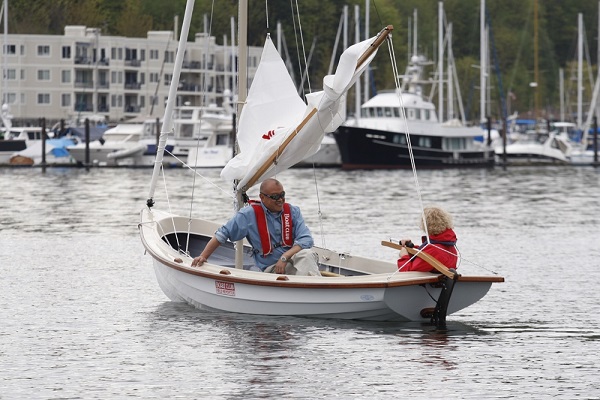17′ Jersey Skiff
Our full-size reproduction of the Jersey Skiff can be easily handled by one person, yet sails comfortably with as many as 4 adults aboard. The Jersey Skiff can be equipped with up to 3 rowing positions.
The Jersey Skiff is a stunning boat with a rich heritage. She was designed in the mid-1800’s to be beach-launched and rowed through surf for rescue and salvage work. This required a boat that was stable and fast, had a high carrying capacity, and was easy to handle even when short-handed.
The resulting design marries the best attributes of the classic Whitehall and New England Dory hulls, as the the fine bow slices through chop without pounding, while the tumblehome transom tracks with the surety of a Whitehall. A small flat section on the bottom reduces draft, and allows the Jersey Skiff to sit solidly on a beach, while increasing stability whether rowing or sailing.
We offer two versions of the Jersey Skiff: an open rowboat and a decked sailboat. The open boat is best for those primarily interested in using the Jersey Skiff for rowing, or who want the ultimate economical workhorse. The sailing version adds the deck (+4″ LOA / +60lbs. Displacement) which keeps the boat drier when sailing in rough conditions, and is very attractive too.
Both the rowing and sailing version include a single sliding rowing seat, which can be fixed in place when desired. With the sliding seat fixed in the aft position, the Jersey Skiff can be rowed tandem. We recommend 9′ spoon blade oars for this boat.
If you wish to use an outboard motor, you absolutely can. On the open rowboat, you can clamp an outboard directly onto the transom. On the decked sailboat, we’ll need to install the optional motor bracket; it is offset to one side so that you can have the motor for backup propulsion without removing the rudder. A 2hp motor will be more than sufficient with this boat, and long shaft motors are recommended.

Jersey Skiff Full Specifications
| Rowboat | Sailboat | |
| LOA: | 16’6″ | 16’11” |
| BEAM: | 69″ | |
| DISPLACEMENT: | 300 lbs | 360 lbs |
| SAIL AREA: | Main, 63 sq. ft. Jib, 32 sq. ft. | |
| Model-Specific Options: |
|
|
Praise for the Jersey Skiff:
From the Soundings Magazine article by Dieter Loibner, “On Sailing: Muscle power and wind are all you need”
“With my feet strapped to the footstop, I tried to plant the slim blades squarely without digging (or “catching crabs”) while skipper Robertson steered us past the current rips. When I managed to coordinate my stroke with the sliding seat, the power of my leg muscles drove the boat nearly as fast as a cruising boat under engine on a parallel course.
This efficiency is a tribute to the lightweight composite materials (all-up the skiff weighs only 360 pounds) and the hull’s fine entry and a clean exit. “It is a shape that evolved over centuries and was dictated by purpose,” Robertson points out. These skiffs were used for fishing, surf rescues, even ocean crossings.”“Sailing and rowing a small craft might be a throwback to the past, but in the light of reality its future looks increasingly bright.”
Click here to read the full article (pdf file). Reprinted with permission from Soundings Publications, LLC.
Oar Northwest, an educational exploration nonprofit, has two custom Jersey Skiffs that they have used to row the entire length of the Missisippi river… twice. 2,320 miles from the headwaters in Minnesota all the way to Louisiana. During their trip, they also made scientific observations along the way to help researchers studying the river ecosystem. They then share their experiences with schoolkids to teach them about science, and feed their natural curiosity and adventurous spirit. The kids always have a lot of questions about being on the river in a little boat for that long, and why they use the boats they do.
Here’s how they described the story of their boats in one of their newsletters:
“The stories . . . are not of fast speedboats or little kayaks, we are using traditional style rowboats. Most people do not have experience with rowboats so they do not appreciate their seaworthiness and efficiency. Unlike jet boats, which move fast, and do a lot of damage when they hit things, the rowboats go slow and steady. And unlike canoes or kayaks that can get swept along by the current, the rowboats have greater power and steering capabilities. The rowboats that are used on the AMR expedition, built by Gig Harbor Boat Works, are called Jersey Skiffs. These were originally designed in the mid 1800’s to be rowed in large waves off of ocean coasts and weigh 250 pounds. They have a steel bottom and are not tippy even in rough conditions. The boats only travel at about six miles an hour so the crew is able to spot obstacles well in advance. Even when the crew does bump up against something they just bounce right off.”
Read more of the kids questions (and the team’s answers) in the Quad-City Times article.
In summer of 2012 we were allowed to eavesdrop on a conversation between a current Gig Harbor Jersey Skiff owner and another fellow interested in becoming a Jersey Skiff owner. The prospective owner, John, asked Lane, the owner a number of pertinent questions that Lane answered in depth… plus a few other interesting and pertinent points. Excellent perspective from an actual Jersey Skiff sailor:
John – You ask good questions. I’ve spent weeks – months – of quality time in the inland waters between Pensacola and Mobile Bay. With a Jersey Skiff in that area, I’d never go outside. Why would I? There’s nothing out there to see.
But inside . . . wow. It doesn’t get much better. Pine trees, white calcareous sand beaches, virtually no tide . . . you can beach a Skiff inside the barrier islands anywhere in that region. And then you can start thinking about areas east of there. I would LOVE to take that skiff to Cedar Key, FL. Or the Everglades in winter . . .
The most accurate way to think about a Jersey Skiff is, it’s an enlarged, wider version of a Whitehall rowing skiff with a sail rig – which is exactly what I was looking for. It’s not a Flying Scot; it’s nearly the opposite. It’s a very different KIND of boat.
The boat is so easily driven, you don’t need much sail, and the Jersey Skiff rig has all you’ll ever need, plus a reef and a roll-up jib that takes about 2 seconds to furl. I’ve literally sailed that boat upwind at one knot of boatspeed in one knot of true wind . . . with about four inches of centerboard protruding below the hull. You’ve owned a Sea Pearl 21; this is like that only lighter and easier to launch and retrieve. (Sea Pearl 21s have internal ballast, as I recall.)
This was on Lake Pend d’Oreille in northern Idaho. I’ve also planed it at 10-12 knots on Pacific Ocean swells in 20 knots of wind — singlehanded. I don’t recommend this for the faint of heart, but in experienced hands it works just fine – better than you’d think!
Body placement is important – you have to move as the wind requires – but with 360 lbs of combined crew weight you will never have a problem. I’m 6’6” and weigh 290, and I’ve never met a wind I couldn’t handle.
With two it’s easier; one person can stay put while the other does the adjusting. Generally I let the “crew” steer from the weather side while I handle both sails and move back and forth athwartships on the (pegged) sliding seat – facing forward. All three sheets, the furling line, the CB pennant, the main halyard, topping lift, and the reefing line are quite close at hand in this configuration. I had the boat made with an extra-heavy boom for use with a vang, but have never installed one because it just isn’t needed.
Ease of launching: You don’t ever have to get the trailer wheels wet. I mean that. Tires yes, but not wheels. I launch it by hand by rolling it off the trailer, taking care not to let the rudder touch bottom. Retrieving is just as easy: I unroll the winch strap and hook so it just reaches the wood crossbeam on the trailer, I lift the boat’s bow onto the trailer, clip the hook on, then let it sit there while I walk to the winch, whereupon I just crank the boat onto the trailer. If you’re agile, you can do this with dry shoes. I’ve never gotten my feet wet yet.
This boat, by the way, has the stainless steel rub strips on the bottom that Dave offers for beaching and other rough use. On Pend d’Oreille Lake I pulled the boat out onto driftwood logs when not in use. The beaches there are gravel, to be avoided. I have photos if you are interested.
In my view, this is not a particularly wet boat. The bow shape and the lapstrake construction help. But if you’re going to spend a lot of time going upwind in 15+ knots of wind in choppy open bays, you’ll get some spray. I’m imagining Pensacola Bay or Mobile Bay, or Apalachicola Bay. These are big places, and they get choppy. The upside is, if you’re doing it in the summer, you’ll be glad for the spray! Just dress for it.
I prefer to stay in quieter places where the extremely shallow draft of the boat is really at home. It will sail upwind in 18” of water; I’ve done it. It will row in less than 12”. Your oar tips will hit bottom before the boat does.
As for a motor . . . I would advise against it. There isn’t a good place to mount it . . . the transom is strongly raked and the stern sections are very fine. The nine foot spoon oars (two sets, and one sliding seat) are an absolute joy and weigh almost nothing. I’ve included a set of standard-type eight footers solely for pushing off beaches, docks, and piers, and rowing in very close quarters, like Monterey Harbor or Santa Barbara, CA.
As for looks . . . it doesn’t get much better than this. You’ll get comments everywhere you go, on the water and off. I tow mine behind a classic car (1965 Checker station wagon), which helps even more. By the way, towing is absolutely zero problem. The trailer tongue is long and the center of gravity is extremely low. I’ve never encountered a curve, at any speed, where I had the slightest doubts about it.
BTW, just a comment on the performance of that design – don’t know if you’ve heard this before: the Jersey Skiff goes MUCH faster with the centerboard up. The difference is unbelievable, more than in any CB boat I’ve owned (and I’ve owned CB boats from 8’ to 40’). I have rarely sailed upwind in that boat with the board more than about 1/3 down, i.e. with the aft lower corner of the board still inside the CB trunk. In heavy air (18-20) upwind I drop it to maybe 1/2. The only condition under which I drop it fully is off the wind in heavy air and big seas in the open ocean – survival conditions for that boat – when it is surfing at 10+ knots . . . and even then, it’s faster with the board down, just twitch as hell. And the flat bottom area, small as it is, turns the boat into a surfboard with enough wind. And under these conditions the rudder, which I would not have expected much performance out of at those speeds, works just fine. Really surprising.
-Lane
“I can’t tell you how much I’ve enjoyed my Jersey Skiff. It has been a fantastic sailing boat for sailing the many lakes of Western Washington and Puget Sound. I am a long time boater but new to sailing and it has been a great, fun challenge to learn the art.
The Jersey Skiff sails easy enough for a beginner like myself to quickly become comfortable, yet has more than enough performance to challenge any sailor. I have sailed it in flat calm to 20 knots of wind in rough seas on Puget Sound, having a great time all the way. It even rows well. It tracks straight and carry well with only 5-6 strokes a minute to keep it up to speed.”
“The only problem I have had is getting away from the dock because so many people come by to ask and comment about my interesting boat.” “Thanks, Gig Harbor, it’s been a real treat getting to know you and the boat and I’m sure it will be for many years to come.”
– From C. S., of Kent, Wa. (17′ Jersey Skiff)
“I’ve been enjoying the skiff *tremendously* over the last few weeks. We’ve had great weather and although the yahoos are out in force on the Willamette River on weekend afternoons, it’s been wonderful sailing and rowing after work on weekdays and early mornings on the weekends. I’ve been out a few times per week for the last month or so, and it’s really given me a deeper appreciation of the skiff – it’s a great boat. I’ve gotten many admiring comments and questions about where it was built (I’m sending them all your way!).”
~ M. Johnston, Oregon
Rowboat starting at
$14,495
Sailaway ready from
$22,995
Imagining your ideal boat?
Take a turn through our online quote creator to see the possibilities. No haggling, no commitment.
